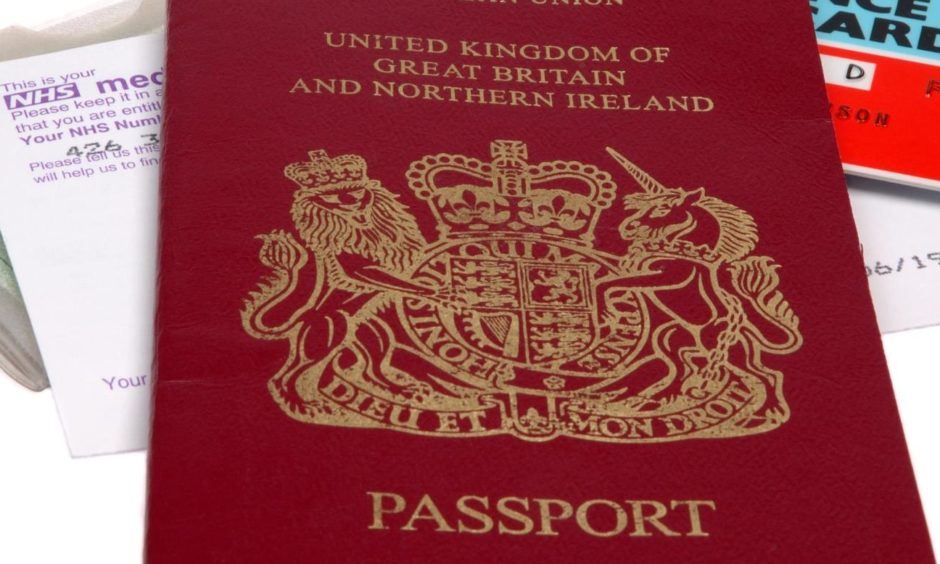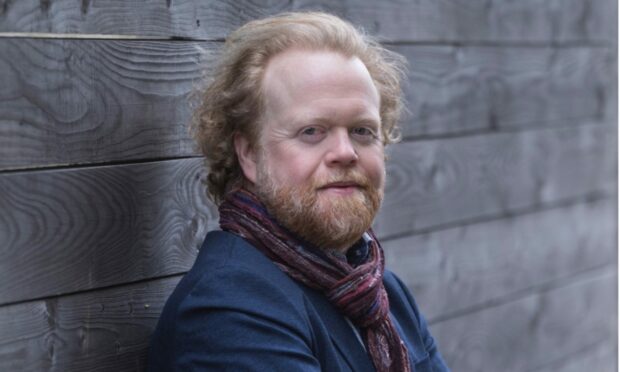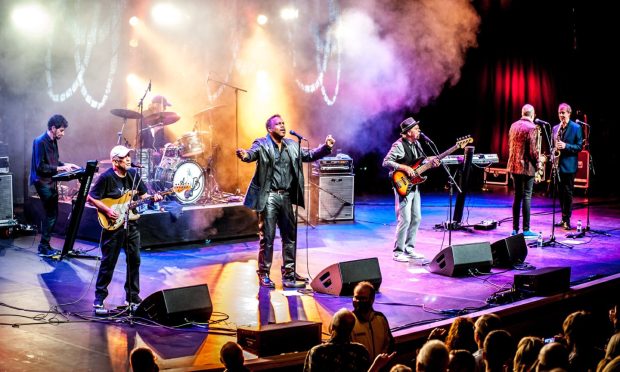Arbroath-born performer, researcher, folklorist and community activist Steve Byrne has been appointed as the new director of Traditional Arts and Culture Scotland (TRACS).
Tell us about your new role?
I’ll be leading TRACS, Traditional Arts & Culture Scotland, an arts organisation which is an alliance of three forums, the Traditional Music Forum, Scottish Storytelling Forum, and the Traditional Dance Forum of Scotland. It has a base at the Scottish Storytelling Centre in Edinburgh, although thanks to hybrid working, our staff are now situated in various communities across the country. TRACS came together around a decade ago partly in response to the ministerial Working Group on Traditional Arts. I’ll be building on the excellent work of outgoing directors Donald Smith and David Francis who are both key champions of traditional arts development in Scotland.
What, in your mind, is the significance of folk culture?
Folk culture is essentially, at its heart, the everyday, the commonplace that exists in every community around the world. We might see it more obviously in our traditions practised on certain days in the year like Burns night or Hogmanay, but if you scratch the surface it’s usually not very far away any day of the week. Many of us know it once it is pointed out to us – the local stories, songs, customs, traditions that make our communities distinctive – but it is often taken for granted, dismissed as somehow inferior and often forgotten about. When people recognise that their own local culture is also of great value, that it often tells a story about where they live or their life experience, the effect can be huge, in terms of cultural confidence. I’ve seen it first hand in schools, where I’ve done Scots song workshops talking to primary kids about the local Scots dialect, and playing them recordings of songs about their town that have lain hidden in the archives. Through digitisation we can bring a lot of this back to the communities where it was first recorded, and it opens up conversations across generations about local people, social history, language and so on. You’ve maybe heard of the Slow Food movement, perhaps what we are talking about is Slow Culture, the less visible stuff below the surface, that every community has, its cultural memory – and it’s just as important as what you see on the telly or hear on the airwaves, maybe even more so.
What are some of your big ambitions in this role?
I’d like to get to a position where we as a society and at government level recognise more readily the importance of our local cultures and traditions in terms of community cohesion, resilience, and personal wellbeing. The ways in which you and your community express themselves, the local languages you speak, how you tell the story of your part of the world. We underestimate the power and meaning that they carry. I would also hope that in time we become a UNESCO accredited NGO (non-governmental organisation) for Intangible Cultural Heritage, which is a key UNESCO convention dealing with local traditions and cultures around the globe. Although the UK isn’t a signatory yet, Scotland has done some significant work in this area over the past 15 years and is ahead of the curve, in the event that the UK does sign up. TRACS has a huge amount to contribute to that process. I’d also like to have teams of creative fieldworkers who are out there recording and celebrating local traditions in communities. We’ve already started that journey through the People’s Parish project, which has worked in nine areas of Scotland over the past year, supported by the Culture Collective programme of Covid recovery funding.
Tell us about your role saving Hamish Henderson’s letter and papers? And the bouzouki? And why these are important in your mind?
I got to know the Henderson family initially through my role as Traditional Arts Officer at Edinburgh Council and also through Professor Fred Freeman, who has done so much himself to celebrate our traditional culture. Hamish died in 2002, and by 2011, it became obvious that something had to be done about the many boxes and suitcases of his papers still in his family’s possession. They had been looked at by institutions, but for various reasons had never been acquired for safekeeping. We undertook one of the first crowdfunding projects in Scotland to do a basic cataloguing of the material.
Over the next couple of years, we worked through it until we had over 10,000 letters, 120 diaries, some manuscripts and a host of ephemera. We were delighted that Edinburgh University Library acquired the papers in 2013; they’re now available for researchers to access through the library’s special collections.
The bouzouki, I had heard about the auction of the late Roy Williamson’s instruments in Forres in 1991, when I was 13 and a diehard Corries fan. Many years later, I was curious about whatever happened to the bouzouki on which he played the first TV performance of ‘Flower of Scotland’ in 1968, not least as I’m a bouzouki player myself. I came across a forum on the internet where the buyer mentioned they were thinking of selling it, and I was eventually able to get in touch with them. We had hoped to launch a crowdfunder to acquire and donate it to the historical instruments collection at Edinburgh University as part of the Arbroath 700 celebrations, but Covid got in the way.
Nonetheless, later that year I managed to launch the crowdfunder and with some very generous donations, we raised the funds and presented it to the museum in spring 2021. I think they are both hugely important because they are representations of our folk culture which is not always well catered for in our major collections, although that is certainly changing now. The Henderson material is very illuminating simply due to the range of people with whom he corresponded – politicians, poets, traditional performers – and it gives much more context to the audio material he recorded in his vital fieldwork.
Q What job would you do if you weren’t doing this?
I’m sure I’d be doing very much the same kind of work, in partnership with organisations like TRACS – albeit much more piecemeal as a freelancer and without the backup of a great team, or the relative security of regular funding.
Q Where in the world are you happiest?
On the Angus east coast, beachcombing and birdwatching with my wife and daughter, or else, up Glenesk where I spent many childhood holidays.
Q Last book you read?
In One Woman’s Life – Celebrating Mary Brooksbank, edited by my good friend, storyteller and historian Erin Farley and Siobhan Tolland, published by the Abertay Historical Society. I’m not a huge reader of fiction, give me a factual book any time!
Q Who inspires you?
I pick up inspiration from a whole range of people, I’m an avid reader especially of the latest publications on my fields of interest. I suppose I most often come back to the work of the well-known fieldworkers Hamish Henderson and Alan Lomax, but more recently I’ve been reading US folklorists Simon Bronner and Henry Glassie, and social activist Arlene Goldbard. I’m hugely inspired by the Public Folklore movement in the US, the principles of which offer huge potential for our communities in Scotland.
Q Your house is on fire – what one item do you save?
I think probably the folder with passports and other key family documents. As I’ve gotten older, I’ve learned that most other things can ultimately be replaced – even instruments! Most of my digital stuff is in the cloud or backed up elsewhere – as an occasional archivist, it’s ingrained!

Q First thing you’d do if you won £1 million?
After making sure my family was sorted, I’d employ a team of folklorists to collect local stories and traditions in communities around the country, and make a founding donation to a Scottish Traditional Music Archive, something which I think is long overdue.
Q Favourite holiday destination?
I travelled so much in the heyday of touring with Malinky that I saw a lot of interesting places, plenty airports and hotels, and met hundreds of different people. So I like to spend time in quieter, slower places, like holiday cottages in Perthshire or the Borders, or in my wife’s home village in east Germany. In terms of places I’ve been to repeatedly though, there’s a lovely little town on the shores of Lake Huron in Canada called Goderich – founded in the 1820s by two Scotsmen – which hosts a wonderful Celtic Festival every August. I have many friends there and would go back at the drop of a hat.
Q What makes you happy?
The fulfilment of getting things finished – a project, an album, a DIY task at home. For the past 20 years, I’ve always had multiple projects burbling away in my head, so the sense of peace it brings when one is concluded is always rewarding.
Q What makes you sad?
Our cultural cringe, especially around our languages, and the fact that our education system, until very recently, gave people no real clue about the evolution of Gaelic and Scots down the centuries. There is a huge amount of mistaken belief out there that simply doesn’t stand up to scrutiny when you look at, for example, the place names on the map. I was lucky to study toponomastics as part of my degree and it hugely changed my own view of Scotland’s linguistic heritage. I genuinely don’t understand what causes people on social media to decry the completely natural ways in which people speak, that are often a deeply personal part of their identity and family. I have little time for folk who try to tell others how to speak or that their languages are a ‘hobby’.
Q Do you believe in love at first sight?
A No, mostly because I know that at first glance, I can be somewhat reserved, dour and seemingly aloof! I’m just shy, honest…
Q What was the first album you ever bought?
Not sure about the first album – probably something by The Corries – but the first single I bought with my own money was The Proclaimers’ I’m Gonna Be (500 Miles), from Our Price in the St John’s Centre in Perth, aged 10.
Q Your favourite musical instrument?
The Scottish smallpipes. I’ve been enchanted by them since I was a boy. I’ve dabbled with them over the years and recently got my own set, made from Scottish laburnum, by my good friend Fin Moore of Dunkeld. Listening to them is wonderful enough, but playing them is like meditation for me.
Q What music do you listen to in the car/the gym etc?
As you might expect, I’ve got a big music collection. Until recently I had a car with a CD player but I’ve now migrated to the Bandcamp app. Most recently on the playlist have been the Decemberwell albums of my great friend, the fiddle player and composer Mike Vass, as well as the ‘Hilbert’s Hotel’ album from splendid Dundee/Fife singer Barbara Dymock. The fabulous Irish artists John Spillane and Eoghan Ó Ceannabháin have also been on repeat in recent months.
What is the best advice you have ever received, and who did it come from?
The late Ian MacKenzie, photographer at the School of Scottish Studies, was a very gentle, calm fellow. When I was a student there, he emphasised the importance of not overloading yourself. If you have something on in the morning and evening, take the afternoon off. If you have something on in the afternoon and evening, take the morning off. I’ve never forgotten it. Of course it’s not always possible, but I’m definitely one for stuffing the diary full to the brim, so I’ve returned to his advice repeatedly, to help ‘keep the heid’.
What do you do to unwind?
Spend time at our allotment, or watch The Repair Shop. Healing, gentle telly full of traditional craftsmanship, lovely outcomes and hope!
Biggest regret?
Not getting round to making proper recordings of my dad before he died, so that his granddaughter could see and hear him. They’d have been good pals.
What or who are you proudest of?
I have several highlights I could point to, but I suppose that, coming from a working class background, as the first in my family to go to university, I’m proud that I’ve stayed the course, despite not always having the greatest financial means at my disposal. My belief in the value of traditional arts has carried me forward, and I’ve believed in myself and my ability to make things happen, sometimes against the odds.
What advice would you give to your younger self?
Keep going, you’ll get there.
What’s the hardest thing you’ve ever had to do?
When my daughter was born she was very poorly and had to be treated in the neonatal unit; it turned out she had a rare metabolic condition. It was a very difficult time for us as a family, but thanks to the wonder of the NHS, she is now healthy and thriving at primary school.
Hardest thing you’ve had to give up during the pandemic?
We didn’t see my wife’s parents for almost 18 months, which was hard, especially for our daughter. That said, ultimately we as a family were much luckier than many people during the pandemic, so we count our blessings.
What’s your motto?
I have two, one from Patrick Geddes, “Think global, act local,” and the other from Swedish author Sven Lindqvist, “Dig Where You Stand”. Both apply to my work and worldview. If ye dinna ken whaur ye’ve come fae, ye’ll no ken whaur ye’re gaun.
- For more information on TRACS, see tracscotland.org/












